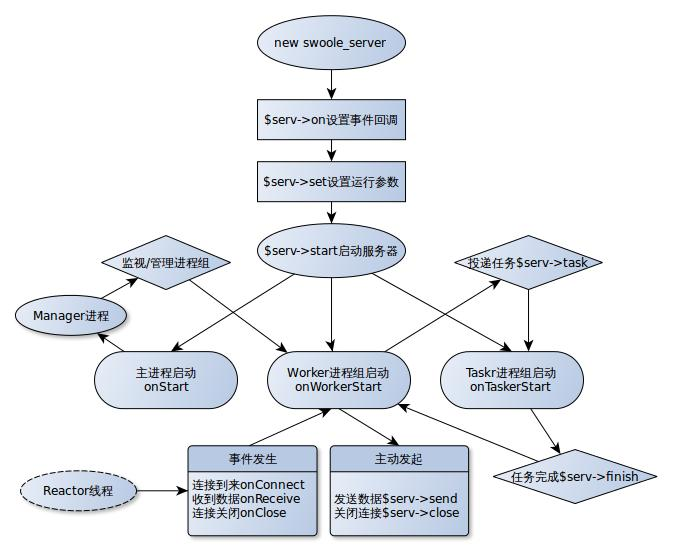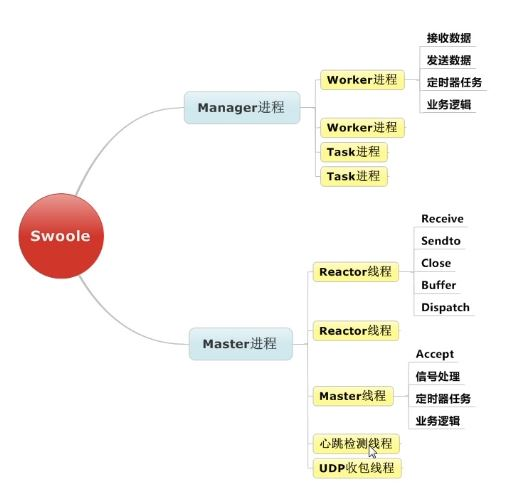Swoole Server instance
May 14, 2021 Swoole
Table of contents
Introduction to Swoole Server
Create an asynchronous server program that supports TCP, UDP, UnixSocket 3 protocols, IPv4 and IPv6, and tunnel encryption for SSL/TLS one-way two-way certificates. Consumers don't need to pay attention to the underlying implementation details, they just need to set up callback functions for network events.
swoole_server can only be used in php-cli environments, otherwise fatal errors can be thrown
Build a server object
$serv = new swoole_server("127.0.0.1", 9501, SWOOLE_BASE, SWOOLE_SOCK_TCP);
Set runtime parameters
$serv->set(array(
'worker_num' => 4,
'daemonize' => true,
'backlog' => 128,
));
Register the event callback function
$serv->on('Connect', 'my_onConnect');
$serv->on('Receive', 'my_onReceive');
$serv->on('Close', 'my_onClose');
There are four styles of callback functions that can be used in PHP
Start the server
$serv->start();
The list of properties
$serv->manager_pid; //管理进程的PID,通过向管理进程发送SIGUSR1信号可实现柔性重启
$serv->master_pid; //主进程的PID,通过向主进程发送SIGTERM信号可安全关闭服务器
$serv->connections; //当前服务器的客户端连接,可使用foreach遍历所有连接
Run the flowchart

Process/thread structure diagram

Simple Swoole tcp server instance:
$serv = new Swoole\Server("127.0.0.1", 9501);
//设置服务器参数
$serv->set(array(
'worker_num' => 8, //工作进程数量
'daemonize' => true, //是否作为守护进程
));
//设置事件回调函数
$serv->on('connect', function ($serv, $fd) {
echo "Client:Connect.\n";
});
$serv->on('receive', function ($serv, $fd, $reactor_id, $data) {
$serv->send($fd, 'Swoole: ' . $data);
$serv->close($fd);
});
$serv->on('close', function ($serv, $fd) {
echo "Client: Close.\n";
});
//启动服务器
$serv->start();